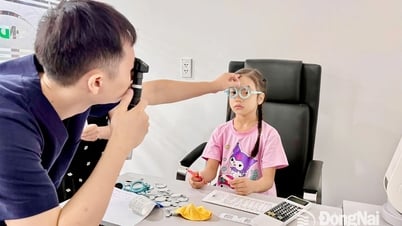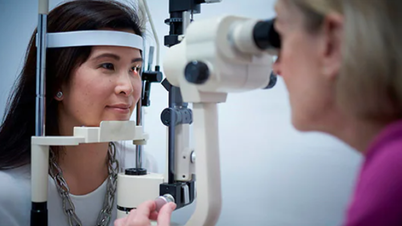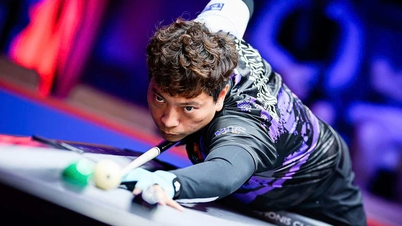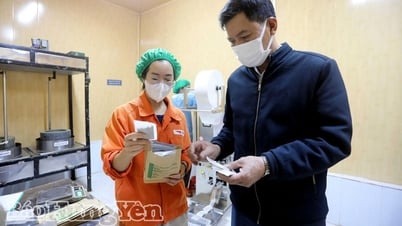Sharing at the scientific seminar "Children's eye care - From theory to practice" held on the afternoon of August 26 in Hanoi, Master - Doctor Dinh Thi Phuong Thuy, an ophthalmologist, said that children can encounter many eye problems.
These can be mild conditions such as refractive errors (nearsightedness, farsightedness, astigmatism) or more serious conditions such as amblyopia (lazy eye), strabismus (crossed eyes) or congenital glaucoma.
Many children suffer from conjunctivitis (pink eye), congenital cataracts or nystagmus (uncontrolled eye movement), which can cause serious damage to vision if not treated promptly.

Master - Doctor Dinh Thi Phuong Thuy shared at the event (Photo: TH).
According to 2024 statistics of the Vietnam Ophthalmology Council, our country has about 5 million children, accounting for 30-40% of school-age children with refractive errors (nearsightedness, farsightedness, astigmatism), of which myopia accounts for the majority.
This rate is higher in big cities like Hanoi and Ho Chi Minh City, where more than 50% of children are affected by refractive errors. This is due to improper study habits and excessive and prolonged use of electronic devices.
Dr. Thuy added that if not detected and treated properly, refractive errors can lead to amblyopia. Amblyopia, also known as "lazy eye", accounts for 1-5% of children under 6 years old, equivalent to 100,000 to 500,000 children, and can cause long-term vision loss.
In addition, about 2-4% of children, equivalent to 200,000 to 400,000 children, have symptoms of strabismus. If not treated properly, this condition can lead to amblyopia or other serious vision problems.
In addition, nystagmus, although rare, is a serious condition that affects a child's ability to see. It is often associated with congenital neurological or visual problems.
To prevent refractive errors in children, parents need to pay attention to increasing outdoor play, giving children open spaces, and limiting the use of devices with screens.
At the same time, we need to follow the 20-20-20 rule, which means that after every 20 minutes of looking at an electronic device screen, parents should let their children rest for at least 20 seconds and focus their eyes on an object about 6 meters away.
Source: https://dantri.com.vn/suc-khoe/thoi-quen-xau-khien-ngay-cang-co-nhieu-tre-bi-can-thi-20250826201925534.htm



![[Photo] Prime Minister Pham Minh Chinh chairs meeting of National Steering Committee on International Integration](https://vphoto.vietnam.vn/thumb/1200x675/vietnam/resource/IMAGE/2025/8/26/9d34a506f9fb42ac90a48179fc89abb3)
![[Photo] Brilliant red of the exhibition 95 years of the Party Flag lighting the way before the opening](https://vphoto.vietnam.vn/thumb/1200x675/vietnam/resource/IMAGE/2025/8/27/e19d957d17f649648ca14ce6cc4d8dd4)

![[Photo] Many people eagerly await the preliminary review despite heavy rain](https://vphoto.vietnam.vn/thumb/1200x675/vietnam/resource/IMAGE/2025/8/27/4dc782c65c1244b196890448bafa9b69)



























































![[Photo] General Secretary To Lam attends Meeting with generations of National Assembly deputies](https://vphoto.vietnam.vn/thumb/402x226/vietnam/resource/IMAGE/2025/8/27/a79fc06e4aa744c9a4b7fa7dfef8a266)































Comment (0)